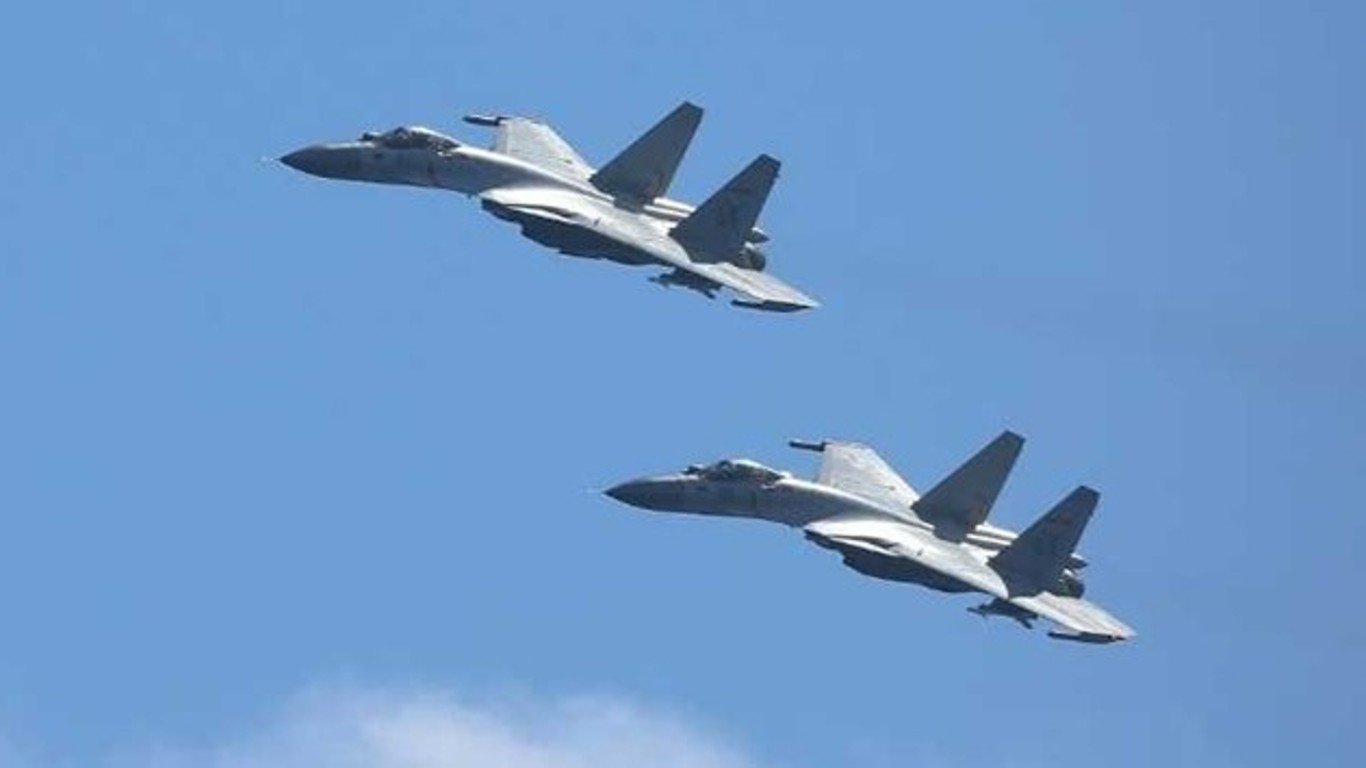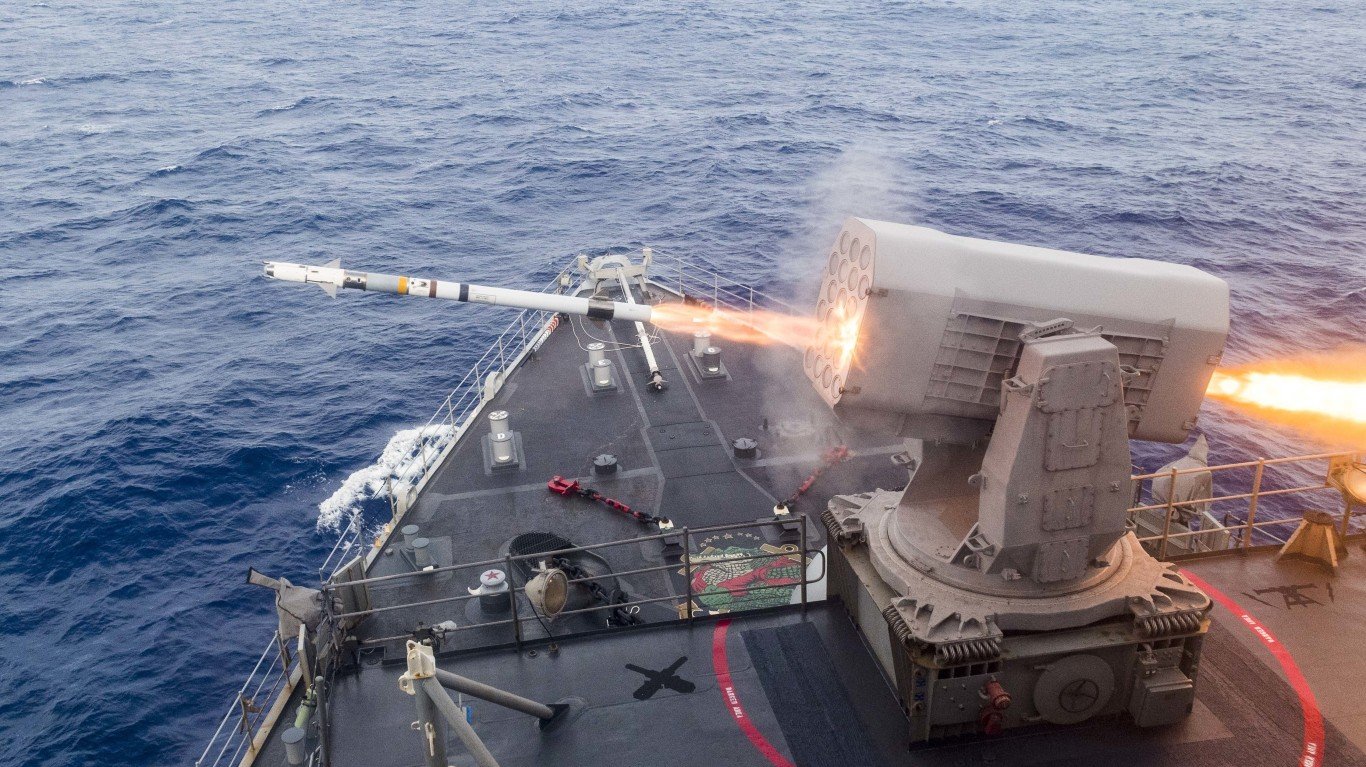 The 10 most expensive weapons systems in the world total $868 billion in research and development and manufacturing costs. The Department of Defense has commissioned each of the weapons. The White House recently released its strategic guidance, “Sustaining U.S. Global Leadership: Priorities for 21st Century Defense,” to address the upcoming $1 trillion defense budget cuts over the next decade. The costs of these expensive weapons systems illustrates the difficulty in cutting so much from the federal defense budget.
The 10 most expensive weapons systems in the world total $868 billion in research and development and manufacturing costs. The Department of Defense has commissioned each of the weapons. The White House recently released its strategic guidance, “Sustaining U.S. Global Leadership: Priorities for 21st Century Defense,” to address the upcoming $1 trillion defense budget cuts over the next decade. The costs of these expensive weapons systems illustrates the difficulty in cutting so much from the federal defense budget.
Read: The 10 Most Expensive Weapons in the World
To understand the magnitude of these weapons’ budgets, one only needs to look at the recent government initiatives aimed to save the economy. The $868 billion cost of the most expensive weapons in the world is much more than the $700 billion set aside by Congress as part of the TARP to salvage the nation’s massive financial system. It is also more than President Obama’s $787 billion stimulus package approved by Congress in February 2009.
The Pentagon breaks the costs of weapons into two categories. The first is research and development. The second is the actual costs to buy the weapons. Together, the two figures can be staggering. The total cost of the Virginia Class Submarine, for example, surpasses $83 billion. That entire amount has been and will be invested to launch only 30 of the weapons. All told, it is an extraordinary expense base to maintain America’s defense.
24/7 Wall St. reviewed the figures from the Department of Defense budget and provided by the General Accounting Office to find the 10 Most Expensive Weapons in the World.”
10. P-8A Poseidon
 > Type: surveillance/antisubmarine plane
> Type: surveillance/antisubmarine plane
> Total Cost: $33 billion
> R&D: $8.2 billion
> Procurement Cost: $24.2 billion
> Total Units: 122
> Price per Unit: $206.5 million
The Boeing P-8A Poseidon is an ocean patrol and antisubmarine aircraft. While it is combat-equipped, the Poseidon’s main function will be to patrol the skies with its state-of-the-art sensory equipment. While Boeing (NYSE: BA) used the 737-800 fuselage as a starting point, it made major modifications to turn the airplane into an effective antisubmarine and surveillance vehicle. The company added the wings of the 737-900, which are necessary to support the four AGM-84K standoff missiles on hard points. The plane’s cargo bay carries Mk 54 torpedoes and mines. The military has ordered 122 of these planes to replace its PC-3 orion fleet.
Also Read: Nearly Every Car Company Says it Will Best Rivals in 2012
9. CVN-78 Class
 > Type: aircraft carrier
> Type: aircraft carrier
> Total Cost: $34 billion
> R&D: $4.6 billion
> Procurement Cost: $29.3 billion
> Total Units: 3
> Price per Unit: $9.78 billion
The CVN-78 is the first of the Navy’s next generation of aircraft carrier. It was designed by Northrop Grumman (NYSE: NOC). The government ordered three carriers for delivery over the next 10 years, with the first carrier, the USS Gerald Ford, set to join the fleet in 2015. When completed, at $9.8 billion, it will be the most expensive single piece of military equipment ever assembled. The massive carrier is intended to replace the long-serving USS Enterprise. The new ship will be nearly three football fields long and weigh more than 100,000 tons. The flight deck, which will support more than 75 aircraft, will span an estimated area of 4.5 acres. The massive floating base will also have two cutting-edge nuclear reactors and be equipped with Evolved Sea Sparrow missiles for defense.
8. Joint Mine Resistant Ambush Protected Vehicle
 > Type: armored transport vehicle
> Type: armored transport vehicle
> Total Cost: $41.6 billion
> R&D: $0.7 billion
> Procurement Cost: $40.9 billion
> Total Units: 26,552
> Price per Unit: $1.6 million
The wars in Iraq and Afghanistan have posed a set of new problems to the U.S. military. The biggest of these was the issue of roadside bombs, or “improvised explosive devices,” also known as IEDs. The military’s solution to this problem was the Joint Mine Resistant Ambush Protected Vehicle, or MRAP. Development of the MRAP program began in 2006, and now there are more than 26,500 separate units on the Department of Defense’s budget. The vehicles are produced by different contractors, and come in different shapes and sizes, depending on their role, but most vehicles have a V-shaped chassis to deflect blasts from under the vehicle, as well as armor and glass capable of withstanding 0.50 caliber rounds.
7. Trident II Missile
 > Type: ballistic missile
> Type: ballistic missile
> Total Cost: $53.2 billion
> R&D: $16.8 billion
> Procurement Cost: $35 billion
> Total Units: 561
> Price per Unit: $65.7 million
Developed by Lockheed Martin (NYSE: LMT), the Trident II is the latest and most advanced version of the U.S. Navy’s ballistic missiles. Equipped with a thermonuclear warhead, the Trident II is carried by most Ohio-class submarines, as well as some British vessels. The missile is 44 feet long and weighs 80 tons. Equipped with a three-stage rocket, the missile is capable of traveling at more than 13,000 miles per hour, and has a range of 4,600 miles. The Department of Defense currently has 561 Tridents on the budget, each worth more than $65 million, not counting research and development costs.
Also Read: The 17 Most Important IPOs to Watch in 2012
6. V-22 Osprey
 > Type: tiltrotor transport plane
> Type: tiltrotor transport plane
> Total Cost: $57.8 billion
> R&D: $13.6 billion
> Procurement Cost: $43.5 billion
> Total Units: 459
> Price per Unit: $95.2 million
Boeing’s V-22 Osprey is a prop plane capable of both extremely short takeoffs and landings (STOL) as well as vertical takeoffs and landings (VTOL). The osprey is a tiltrotor aircraft, meaning its two 38-foot blades can tilt upwards and allow the aircraft to take off like a helicopter. The benefit of the V-22 is that once it is airborne and the rotors are tilted forward, it has a much greater range than a helicopter.The Osprey, which serves as a transport, can travel up to 390 nautical miles without refueling at speeds surpassing 260 miles per hour. There are 459 Ospreys currently on the Department of Defense’s budget, each costing $95.2 million dollars.
5. F/A-18E/F Super Hornets
 > Type: fighter jet
> Type: fighter jet
> Total Cost: $57.8 billion
> R&D: $7.3 billion
> Procurement Cost: $50.5 billion
> Total Units: 556
> Price per Unit: $90.8 million
The Boeing F/A-18E/F Super Hornet fighter aircraft is a modernized version of the heavily-utilized F/A 18 Hornet. The plane, which comes in a single-seat (E) and two-seat version (F) is primarily used by the Navy and stationed on aircraft carriers. The F/A 18 E/F carries a massive array of weaponry, including a 20 mm gun and eleven separate weapons stations, which can carry air-to-air missiles, air-to-ground missiles, and laser-guided bombs. The Super Hornet is one of the few Navy fighters that will not be phased out by the F-35 joint strike fighter. Each Super Hornet costs the military upwards of $90 million, not counting development costs. The Department of Defense has 556 on its budget.
4. F-22 Raptor
 > Type: stealth fighter jet
> Type: stealth fighter jet
> Total Cost: $79.2 billion
> R&D: $40.5 billion
> Procurement Cost: $37.9 billion
> Total Units: 188
> Price per Unit: $211.6 million
The Lockheed Martin/Boeing F-22 Raptor is arguably the most advanced fighter jet in the world. It is also the most expensive, costing $211 million per jet. Just 10 of these aircraft combined are worth more than the GDP of Greenland. The DOD currently has 188 on its budget. The Raptor, which first came into operation in 2005, is an extremely fast stealth fighter and is designed to identify, track and take out targets before it is ever actually seen. The fighter is equipped with two AIM-9 Sidewinder missiles, six medium-range air-to-air missiles, a 20 mm gatling gun, two 1,000 pound bombs and eight 250 pound bombs.
3. Virginia Class Submarine
 > Type: nuclear submarine
> Type: nuclear submarine
> Total Cost: $83.7 billion
> R&D: $7.2 billion
> Procurement Cost: $76.6 billion
> Total Units: 30
> Price per Unit: $2,552.6 million
The Virginia Class submarines are arguably the most advanced nuclear subs in the world. The Virginia is 377 feet long and weighs 7,800 tons, or the equivalent of 821 school buses. The massive underwater craft is produced by General Dynamics (NYSE; GD) Electric Boat and Newport News Shipbuilding, which are the only two shipyards capable of building nuclear subs. The Virginias carry 38 different weapons, including Tomahawk Cruise Missiles, mines and torpedoes. While eight are currently in operation, the Department of Defense has 30 of these $2.5 billion subs budgeted.
Also Read: When 8.5% Unemployment is Good
2. DDG 51 Destroyer
 > Type: destroyer
> Type: destroyer
> Total Cost: $101.8 billion
> R&D: $5.1
> Procurement Cost: $96.6 billion
> Total Units: 75
> Price per Unit: $1,299.3 million
The DDG 51, also known as the Arleigh Burke-class destroyer, has been in service since 1991. By now, there are roughly 60 in active service, with another 15 in the Department of Defense’s budget. Each warship is more than 500 feet, stem to stern, with the second, larger generation of Arleigh Burkes displacing roughly 9,200 tons. The destroyer is produced by a large group of contractors, including Bath Iron Works, General Dynamics and Northrop Grumman. The crew on each is roughly 350 servicemen. The newest generation is equipped with two vertical launching systems for tomahawk missiles, a 5″ gun, torpedoes and an advanced mine-detection system.
1. Joint Strike Fighter
 > Type: multi-role fighter jet
> Type: multi-role fighter jet
> Total Cost: $326.5 billion
> R&D: $58.4 billion
> Procurement Cost: $267.6 billion
> Total Units: 2,457
> Price per Unit: $109.5 million
The F-35 Lightning II multirole jet fighter, which is still under development, integrates advanced stealth technologies and sensor systems with supersonic speed. The military intends the relatively low-cost flexible stealth fighters to perform several different roles, such as air-to-surface, air-to-air and reconnaissance missions. Lockheed Martin and its partners are developing three separate aircraft using one chassis. The F-35A will use standard takeoff and landing and will be used primarily by the Air Force. The F-35B will have short takeoffs and vertical landings and be used by the Marines. The F-35C will be able to take off and land on carriers. The Department of Defense has budgeted nearly 2,500 of the aircraft, with each costing just under $110 million. The total price tag is $326.5 billion.
-Douglas A. McIntyre & Micheal B. Sauter
Take This Retirement Quiz To Get Matched With A Financial Advisor (Sponsored)
Take the quiz below to get matched with a financial advisor today.
Each advisor has been vetted by SmartAsset and is held to a fiduciary standard to act in your best interests.
Here’s how it works:
1. Answer SmartAsset advisor match quiz
2. Review your pre-screened matches at your leisure. Check out the advisors’ profiles.
3. Speak with advisors at no cost to you. Have an introductory call on the phone or introduction in person and choose whom to work with in the future
Take the retirement quiz right here.
Thank you for reading! Have some feedback for us?
Contact the 24/7 Wall St. editorial team.


